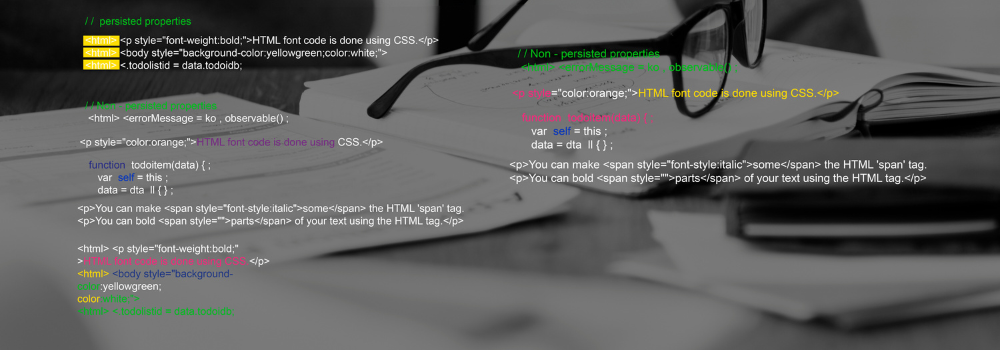A Very Short intro to APIs
APIs are mechanisms that enable two software components to communicate with each other using a set of definitions and protocols. For instance, consider a music streaming service that hosts a vast library of songs. Your music app on your smartphone interacts with this service through APIs, enabling you to search, play, and download your favorite tracks directly to your device.
[ Learn more: API Integration, and API Integration Platforms ]
API Security
APIs face numerous security risks that can jeopardize the privacy, accuracy, and accessibility of data and services. Recognizing these threats is vital for creating APIs that are both secure and effective.
Imagine APIs as doors that allow information to flow between different software applications.
Just like a door can be a point of entry for both welcome and unwelcome visitors, APIs can be vulnerable to certain types of security risks. Understanding these risks is essential to keep the information safe.
Here are some common threats:
1. Injection Attacks
Injection attacks happen when an API receives data that hasn’t been adequately checked or cleaned, leading to potential security breaches. This situation can result in the execution of harmful code, leaks of sensitive data, or unauthorized individuals gaining access.
Injection Attacks are like someone sneaking a fake key into your door lock.
API security can be enhanced with three key methods, akin to how a restaurant operates:
Here’s what needs to be done:
1. Parameterized Queries:
In an API, parameterized queries ensure that each data request is processed separately and accurately, preventing the mix-up of data and blocking malicious code injections. It’s like having a separate pan for each dish, ensuring that no flavors get mixed up or contaminated.
2. Input Validation:
Input validation scrutinizes incoming data before the API processes it, ensuring it’s valid and as expected. It’s a way to keep out unwanted or harmful data. This is like having a doorman at the restaurant who checks each guest’s reservation before letting them in.
3. Output Encoding:
Output encoding ensures data leaving the API is secure and can’t be tampered with. It’s like the restaurant wrapping the dessert in a secure package that prevents anyone from tampering with its contents.
Injection Attacks can happen through SQL Injection, XML/XXE injection, and OS Command injection.
2. Authentication and Authorization
Weak authentication and authorization processes can lead to unauthorized access to an API’s resources.
Think of APIs as special members-only clubs, where only certain people are allowed to enter and access its resources.
Authentication
Weak authentication mechanisms, like using simple passwords or easily guessable tokens, are like having a flimsy lock on the door – anyone with a bit of effort can get in.
Authorization
Authorization is granting specific access permissions to individuals. It’s about determining who can access what resources and what actions they can perform. Poorly defined access controls, like giving everyone the same key to all the rooms
To prevent these issues:
- Strong authentication protocols – Use strong authentication protocols
- Complex passwords – Make sure to create robust, complex passwords.
- A reliable tracking system – Implement a secure session management
- Set up clear, specific rules – Implement clear, fine-grained access controls
3. Cross-Site Scripting (XSS)
XSS attacks occur when malicious scripts are injected into web pages served by the API. These scripts can then be executed by unsuspecting users’ browsers, leading to unpleasant consequences.
Going back to the restaurant example, this is like malicious ingredients being smuggled into your baked goods, potentially causing harm to unsuspecting customers.
The impact of XSS attacks can range from stealing sensitive information, like credit card details, to hijacking user sessions, allowing attackers to take control of user accounts.
To prevent XSS attacks, API developers must
1. Validate and sanitize user-generated content
API developers must scrutinize any data generated by users. This ensures that no malicious scripts are hidden among the valid data.
2. Implement content security policies
Content security policies restrict the types of scripts that can be executed on your API’s webpages, preventing malicious scripts from sneaking in.
3. Utilize output encoding
Output encoding converts any potentially harmful characters in the data into harmless representations, ensuring that the data sent from the API is safe for users to interact with.
4. Cross Site Request Forgery (CSRF)
CSRF attacks work by tricking an authenticated user into submitting a malicious request to an API without their knowledge or consent. Cross-Site Request Forgery (CSRF) attacks are like someone tricking you through social engineering into signing a contract without you realizing it.
The consequences of CSRF attacks can be severe, ranging from unauthorized transactions and data modification to complete account takeover.
Here’s how it can cause problems:
- Unauthorized Transactions: It could lead to unauthorized transactions, like unknowingly transferring money.
- Changes to Data: It might result in changes to data, like altering your profile information without your knowledge.
- Account Takeover: It can even lead to account takeover, where the attacker gains control of your account.
To prevent CSRF attacks, here’s what developers do:
1. Implement Anti-CSRF Tokens
This is like adding a unique, secret code to each official form or action. Only requests with the correct code are accepted, ensuring the action is intentional.
2. Validate Referrer Headers
This is like checking the origin of a request to make sure it’s coming from a legitimate place, akin to ensuring that a letter you receive is from a trusted source.
3. Use Unique, Unpredictable Request Identifiers
This involves giving each request a unique, hard-to-guess identifier, similar to using a one-of-a-kind, secure signature for each transaction to verify its authenticity.
5. Denial of Service (DoS) Attacks
DoS attacks seek to compromise an API’s functionality by flooding it with a massive amount of requests or tasks that demand a lot of resources.
It is similar to a crowd of people suddenly rushing into a small store, not to shop, but just to fill up the space.
The consequences of DoS attacks can range from degraded performance and slow response times to complete downtime of the API.
To prevent DoS attacks, Here’s what needs to be done:
1. Rate limiting:
This is like setting a limit on the number of requests an individual user or IP address can send in a given time period. This is like setting a limit to the number of people who can enter your store.
2. Request throttling
Think of throttling as slowing down the flow of requests. When the API detects a sudden increase in traffic, it can temporarily slow down the processing of requests to prevent it from being overwhelmed. This is like having a system that prevents too many people rushing in or rushing out.
3. Monitoring traffic for anomalies
This involves constantly monitoring the API’s traffic patterns to detect any unusual spikes or irregularities. It’s like having security cameras in your store that alert you when a group of people starts causing a disturbance.
6. Man-in-the-Middle (MitM) Attacks
In a MitM attack, the attacker positions themselves between the API and its clients, intercepting and modifying communication without the knowledge of either party.
It is like an eavesdropper tapping into the line and listening to a private conversation. During MitM, attackers can listen in on the communication, manipulate data, or even impersonate users.
To prevent MitM attacks, API developers need to employ robust security measures:
1. Implement Secure Communication Channels
Using protocols like HTTPS/TLS ensures that the communication between the API and its clients is secure, making it very hard for anyone to listen in or tamper with the messages.
2. Proper Certificate Validation
This step involves validating the certificates of the clients and servers involved in communication. This step is like verifying the identity of the person you’re talking to on the phone, making sure they are who they say they are.
7. Insecure Direct Object References (IDOR)
In the world of APIs, Insecure Direct Object References (IDOR) are like when an API openly shows internal references without properly checking who is accessing them.
Insecure Direct Object References (IDOR) are like leaving files in an office with their labels on display and no lock on the cabinet.
To prevent IDOR vulnerabilities, API developers need to implement
1. Access controls based on user roles and permissions
Ensuring that only users with the right permissions can access certain data. This is like setting rules in the office about who can access which files, based on their job role. This ensures that users can only access the resources they are authorized to, preventing unauthorized access.
2. Indirect object references
Instead of exposing internal identifiers directly, APIs can use indirect references that require additional authorization steps to decode. It’s like labeling files in a way that doesn’t reveal their contents or importance, making it harder for someone to guess and access sensitive information.
8. Insecure Deserialization
This vulnerability arises when APIs accept and process serialized data (data converted into a format for easy storage or transmission) without verifying if it’s safe.
Insecure deserialization is like accepting a package without checking what’s inside it.
This could lead to several problems:
- Attackers might execute arbitrary code
- They could perform remote code execution
- It might cause a denial of service
To prevent Insecure Deserialisation:
1. Validate and sanitize serialized data
API developers should thoroughly validate and sanitize serialized data before processing it. This involves checking the data format, type, and origin to ensure it is safe and legitimate.
2. Implement proper input validation
Think of input validation as a security checkpoint for all incoming data, including serialized data. This involves checking the data against predefined rules and expectations to ensure it is within acceptable limits and doesn’t contain any malicious code.
3. Use libraries or frameworks with built-in deserialization protections
API developers should leverage libraries or frameworks designed with secure deserialization mechanisms. These tools handle the deserialization process with built-in protections, reducing the risk of malicious code injection.
9. Information Disclosure
Information Disclosure happens when sensitive information like API keys, credentials, or internal system details is inadvertently revealed.
Information Disclosure vulnerabilities are like accidentally sharing secret recipes or private notes in a public place.
These vulnerabilities can occur when APIs return data in responses, generate error messages, or store information in logs without proper safeguards.
To prevent information disclosure, API developers need to implement stringent security measures:
1. Regularly review API responses
API developers should scrutinize the data returned by their APIs. This ensures that no sensitive information is inadvertently exposed in the responses.
2. Analyze error messages
API developers should carefully examine error messages to ensure they don’t reveal any confidential information, such as internal system details or stack traces.
3. Monitor logging mechanisms
API developers should monitor their logging mechanisms to ensure they aren’t storing sensitive information, such as API keys or credentials, in plain text.
10. Insufficient Logging and Monitoring
Without proper logging, it’s impossible to track what’s happening with the API, and without monitoring, it’s difficult to detect and respond to security incidents.
Insufficient Logging and Monitoring is like having a security camera system that either doesn’t record everything or isn’t watched regularly.
To improve security measures:
1. Implement Robust Logging Mechanisms
Making sure that all significant activities and unusual occurrences are logged (recorded) properly.
2. Employ Monitoring Solutions
Implement monitoring tools that analyze logs, detect anomalies, and provide real-time alerts.
11. Data Privacy and GDPR Compliance
Data privacy and GDPR compliance are like ensuring that your customers’ personal information is treated with respect and protected from misuse.
It is crucial to properly manage and safeguard sensitive customer data.
Here’s what needs to be done:
1. Properly Handle and Protect Sensitive User Data
API developers should implement strong security measures, such as encryption and access controls, to protect sensitive data from unauthorized access, theft, or loss.
2. Obtain Explicit User Consent for Data Processing
API developers need to obtain explicit consent from users before collecting or processing their personal data.
3. Provide Mechanisms for Users to Access, Modify, or Delete Their Personal Information
API developers should provide users with easy-to-use mechanisms to access, review, modify, or delete their personal information if they wish.
Summary
In summary, ensuring the security of an API is akin to fortifying a house against break-ins. It involves using robust materials and locks , regularly inspecting for vulnerabilities, ensuring only authorized access, encrypting sensitive data whether stored or in transit, staying informed about the latest security methods and threats, and keeping the API and its components up-to-date to promptly address any security weaknesses. This comprehensive approach is key to maintaining a secure and resilient API.
How to get started with API Integration
If you are interested in learning more about how to integrate your systems securely through APIs, please Contact Us today. We would be happy to help you get started.
DCKAP Integrator
DCKAP Integrator is an iPaaS platform that can help you to connect any two systems like ERP, eCommerce, CRM and more. It is a cloud-based platform that is easy to use and affordable. DCKAP Integrator can help you to automate your workflows and improve your business efficiency.















